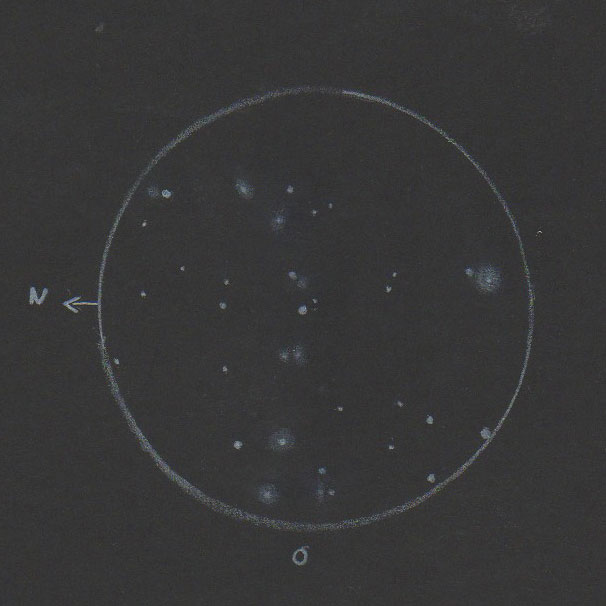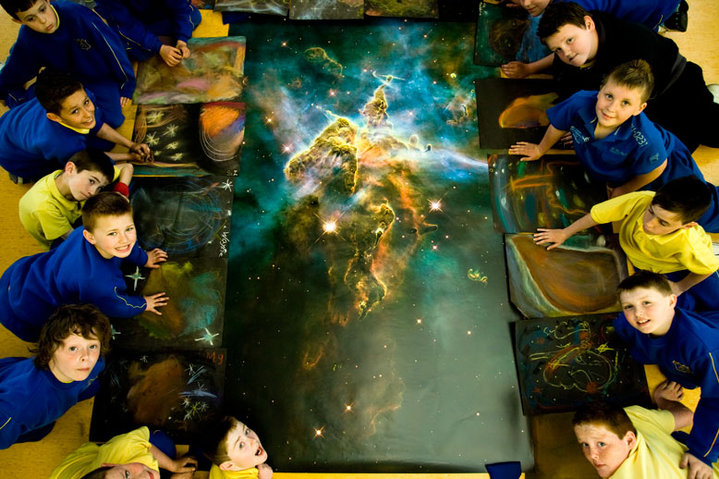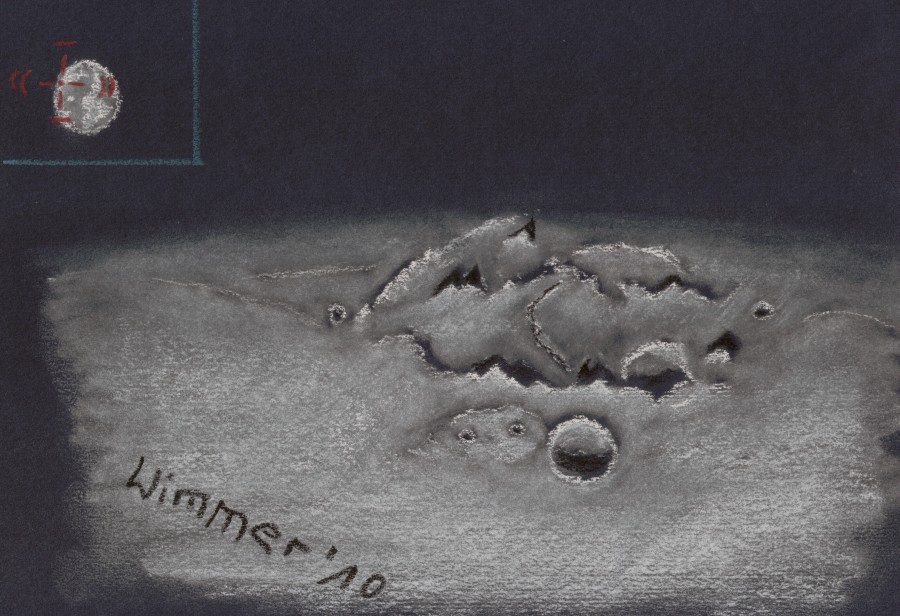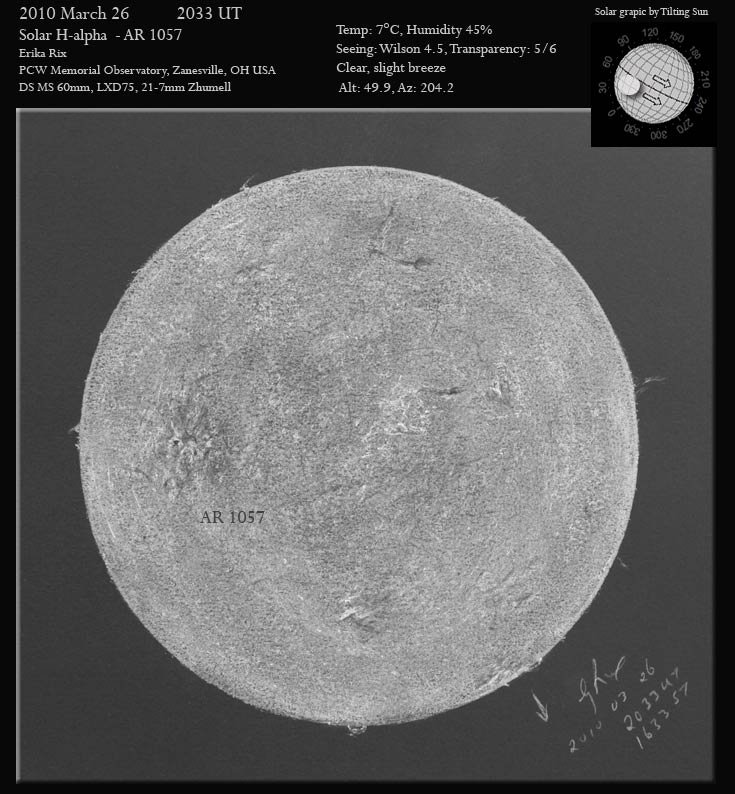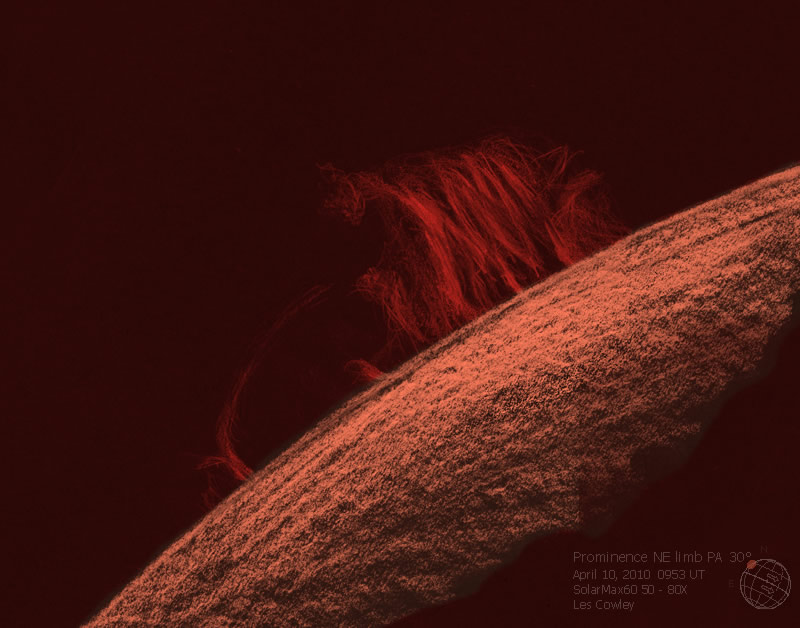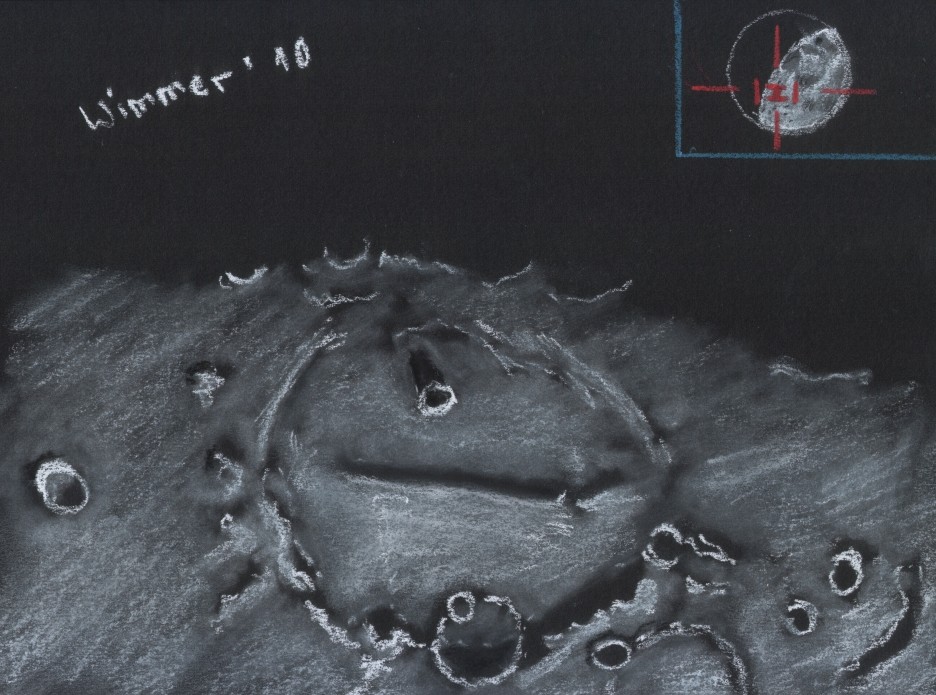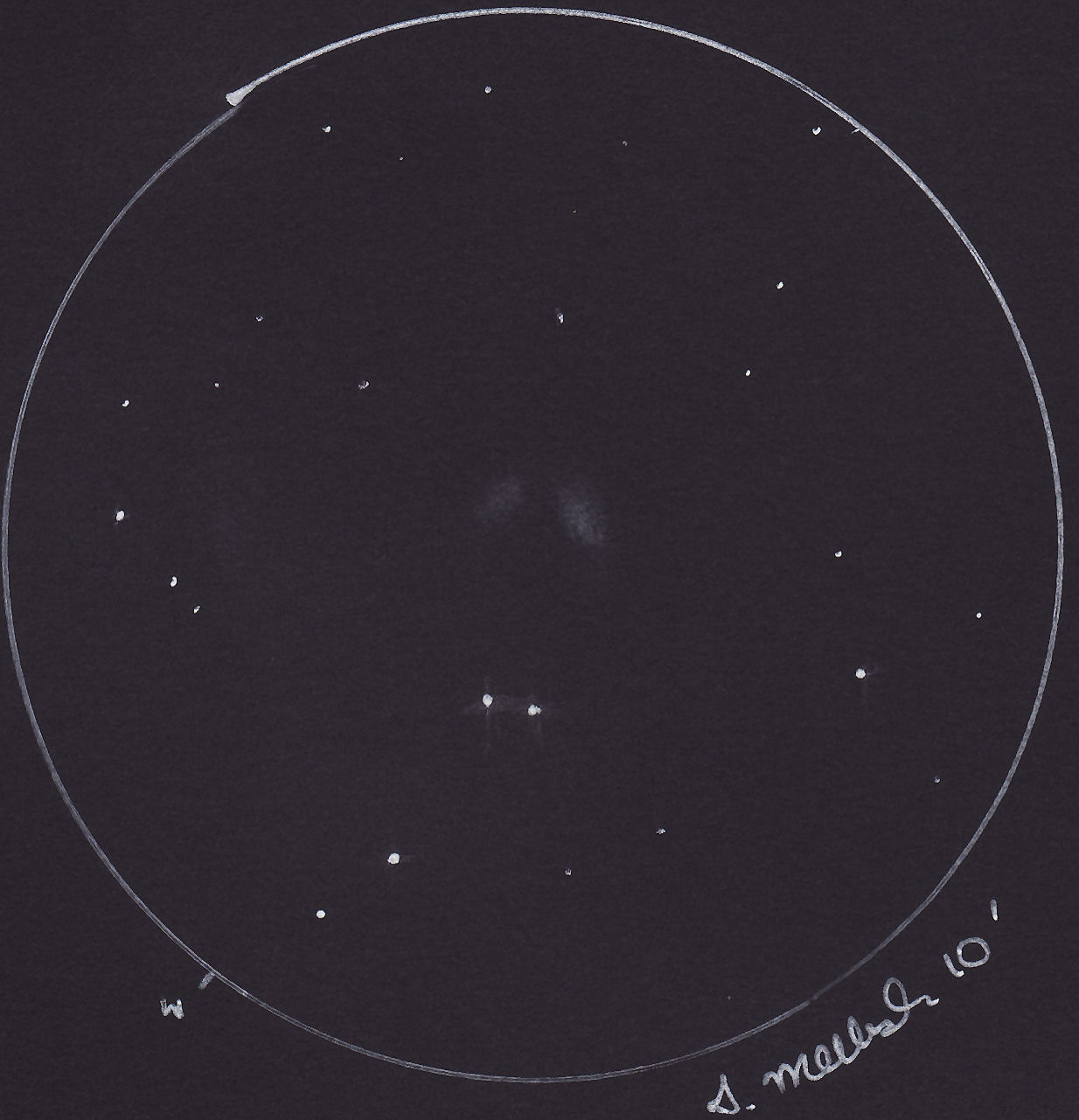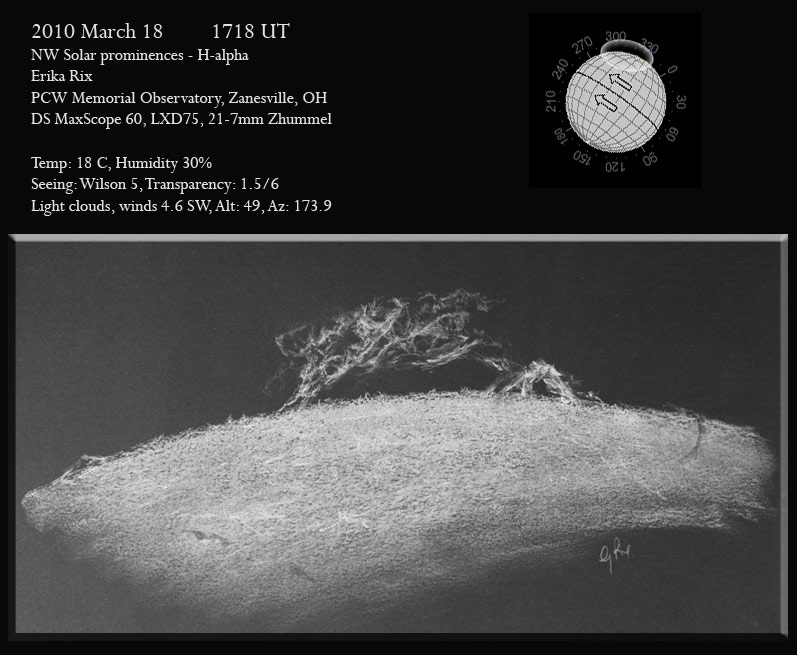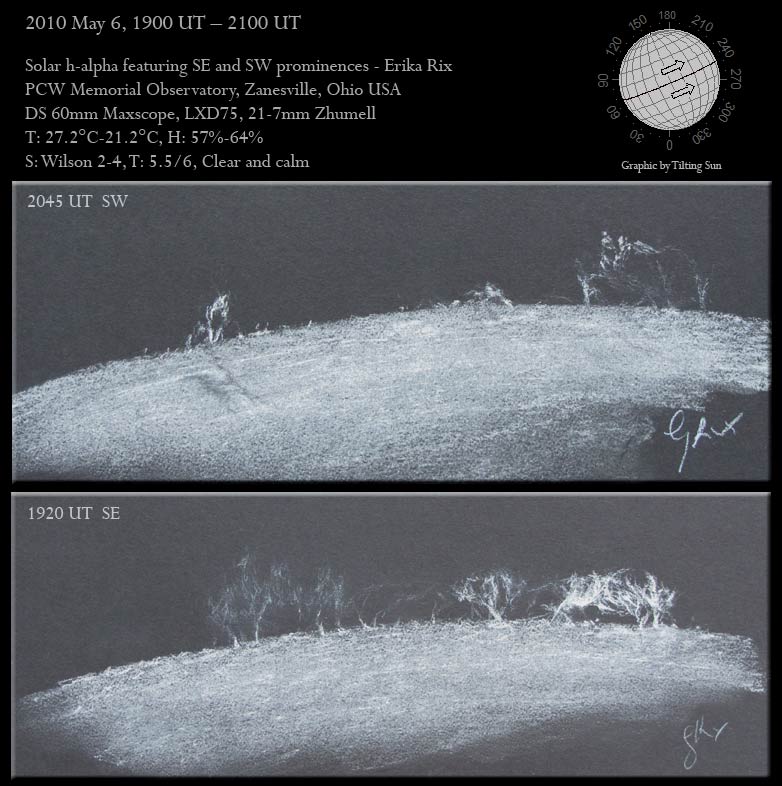
Solar Prominences – May 6, 2010
Sketch and Details by Erika Rix
2010 May 6, 1900 UT – 2100 UT
Solar h-alpha featuring SE and SW prominences – Erika Rix
PCW Memorial Observatory, Zanesville, Ohio USA
DS 60mm Maxscope, LXD75, 21-7mm Zhumell
H-alpha sketch created scopeside with black Strathmore paper, white Conte’ crayon and pencil, white Prang watercolor pencil, Derwent charcoal pencil, black oil pencil.
T: 27.2°C-21.2°C, H: 57%-64%
S: Wilson 2-4, T: 5.5/6
Clear and calm
Alt: 58.5-37.8, Az: 229.2-259.9
I set up outside of the observatory today since the Sun was moving over the SW tree line and I didn’t want to rush my observing session. I had planned on putting in the cold crops in the garden but just couldn’t resist observing instead.
The active regions and filaments were tempting, but it had been so long since I’ve done close up prominence studies that I decided to concentrate on two limb areas instead. At the beginning of the session, the SW had a larger prominence that looked like a comma hovering over a crooked finger. I decided to move to the SE limb instead because what appeared to be a very bright hedgerow prominence with a smaller prominence beside it, turned out to a very wide set of prominences connected together, with over half of it so faint it was difficult to tease the detail out with the poorer seeing conditions at the beginning of the session.
Seeing gradually improved and I decided to go for a second sketch and just couldn’t help nabbing that comma prominence. It had already changed its shape to where it was no longer a comma, but a large loop instead. I was only able to make out the faintest portion of the loop with my Sol-Survivor cover completely shut around my head and eyepiece.

